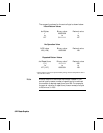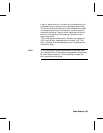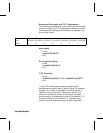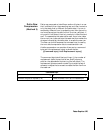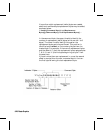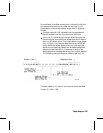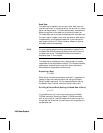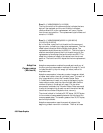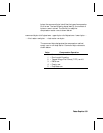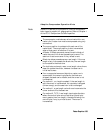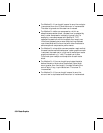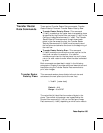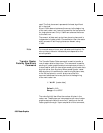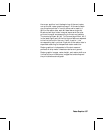Row 2 – ?*b2W(00000010)(11110000)
The first three bits of the command byte indicate that one
byte will be replaced, and the next five bits indicate a
relative offset of 2, so the replacement will occur 2 bytes
from the current position. The replacement byte follows and
contains 11110000.
Row 3 – ?*b5W(00000000)(00001111)(00100010)
(10101010)(10101010)
As in the other rows, the first three bits of the command
byte are zero, indicating a single byte replacement. The five
offset bytes indicate a relative offset of zero bytes. The
replacement byte follows and is 00001111. The third byte is
another command byte and the first three bits signify the
replacement of two bytes (the top three bits are 001). The
offset bits indicate an offset of two bytes from the current
position. The fourth and fifth bytes are the two replacement
bytes.
Adaptive
Compression
(Method 5)
Adaptive compression enables the combined use of any of
the four previous compression methods (0 through 3), and it
includes the ability to print empty (all zeros) rows or to
duplicate rows.
Adaptive compression interprets a raster image as a block
of raster data rather than as individual rows. The result of
this interpretation is that the Transfer Raster Data
(?*b#W) command is sent only once at the beginning of a
raster data transfer, and the value field (#) identifies the
number of bytes in the block (all rows). For the other
compression methods, the Transfer Raster Data command
is sent at the beginning of each row and the value field (#)
identifies the number of bytes for that row only.
The size of a block is limited to 32,767 bytes. (32,767 bytes
is the number of compressed bytes and not the size of the
uncompressed data). To transfer greater than 32,767 bytes,
send multiple blocks.
Adaptive compression uses three control bytes at the
beginning of each row within the block. The first of these
6-30 Raster Graphics6-30 Raster Graphics



